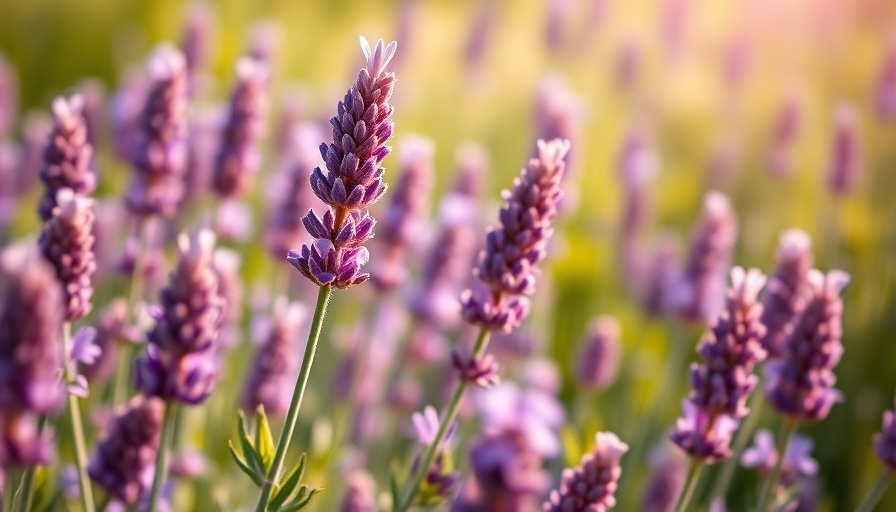
Unveiling the Beauty of Lavender: A Comprehensive Guide
As summer graces us with longer days and warmer temperatures, the buzz surrounding lavender cultivation fills the air, captivating both seasoned gardeners and novices alike. This enchanting herb, with its stunning appearance and delightful fragrance, is not just a feast for the senses—its versatility in cooking, beauty products, and health remedies makes it an essential addition to every garden.
Understanding Types of Lavender and Their Unique Benefits
The vast world of lavender is primarily divided into two main types: English and Spanish lavender. English lavender (Lavandula angustifolia), characterized by its gray-green leaves and slender purple flowers, is a culinary gem and a staple in aromatherapy, often found in the renowned Herbes de Provence. Popular cultivars like 'Hidcote' boast an intense fragrance, while 'Munstead' offers compact growth ideal for smaller spaces, proving that even tiny gardens can thrive with floral elegance.
On the other hand, the Spanish lavender (Lavandula stoechas) entices us with its distinctive pineapple-shaped blooms, attracting bees with its open, flared petals. Historically, Romans cherished this herb for its aromatic properties, and today, gardeners continue to plant it as a charming ornament while enriching their gardens with pollinator-friendly blooms.
Lavender Care: Essential Tips for Thriving Plants
Successful lavender cultivation hinges on understanding its needs. For optimal growth, choose a sunny location with well-draining soil, as lavender thrives in drier conditions. Regular watering during dry spells is crucial, especially in the early stages after planting. Once established, these hardy plants are drought resistant, making them an ideal choice for sustainable gardening.
Pruning is another fundamental practice that keeps lavender plants compact and encourages new growth. Prune lightly in early spring, removing around one-third of the plant. This not only helps maintain shape but also promotes fuller blooms. Exploring different propagation techniques through cuttings or divisions enhances your lavender collection further while saving on costs.
Harvesting and Using Lavender: A Journey of Discovery
When it comes to harvesting lavender, timing is everything. The best time to cut is just before the blooms fully open, capturing their fragrance at its peak. Drying the flowers can preserve their aroma for use in sachets, potpourri, or culinary dishes, adding a unique twist to everything from baked goods to herbal teas.
Beyond cooking, the uses of lavender extend to DIY beauty products and home remedies. Infuse oils, create calming balms, or even craft homemade soaps that carry the soothing scent of lavender, turning your bathroom into a personal spa retreat. These projects not only enrich your space but also connect you with the fruits of your labor.
Creating a Lavender Oasis: Landscaping Ideas to Inspire
Incorporating lavender into your garden design can elevate the aesthetic appeal of your outdoor space. Consider planting lavender in rows along pathways, creating stunning borders. Its deer and rabbit resistance makes it a fantastic addition to gardens needing minimal maintenance. Add contrasting colors with complementary plants such as roses or sunflowers to draw attention to those vibrant purple hues.
Furthermore, embracing vertical gardening solutions allows you to maximize space and create a layered effect. Lavender pots can adorn balconies or patios, bringing the beauty of the herb garden to urban settings while attracting beneficial pollinators.
Final Thoughts: Why Lavender Deserves a Spot in Your Garden
Lavender embodies the spirit of summer with its vibrant blooms and sweet aroma, making it a beloved choice for gardens across the globe. By implementing the right care techniques and creative landscaping ideas, you can cultivate a flourishing lavender oasis filled with beauty, tranquility, and usefulness.
Whether you're seeking a sensory experience through culinary ventures or aiming to create a picturesque vista in your outdoor space, lavender proves to be a rewarding addition to any garden. So, roll up your sleeves and let the magic of lavender inspire your gardening journey!
 Add Row
Add Row  Add
Add 




Write A Comment